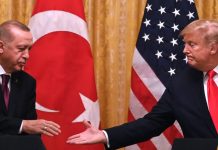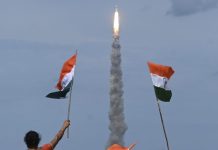While the Kashmir issue remains a topic of great contemplation nowadays with its relation to constitutional and central governance, India Today brings our attention to Gilgit-Baltistan in the Pakistan region.
Is Modi Government Stifling Innocent Voices In Kashmir With Iron Curtain?
At the time of partition of India, the princely state of Jammu and Kashmir comprised of five regions: Jammu, Kashmir, Ladakh, Gilgit Wazarat and Gilgit Agency.
In 1935, the British leased Gilgit Agency for 60 years from the King of Jammu and Kashmir. The British already had a political agent in Gilgit Wazarat to keep an eye on the USSR. A British military officer was the administrator of Gilgit Agency, and the combined region was under the control of Gilgit Scouts.

Before exiting India, the British withdrew the lease and handed back the region to the King of Jammu and Kashmir. The security arrangement was to remain in place until an alternative was found.
When Pakistan attacked Kashmir in October 1947, the British administrator Major William Brown mutinied with the help of Subedar Major Babar Khan. Major Brown was said to be close to his English boss stationed in Karachi and preferred reporting to him than the King.
India-Pakistan Dispute Over Kashmir Can be Resolved At SCO: Russian Experts
The revolutionaries killed the King’s governor and a small group of Sikh and Gurkha soldiers in Gilgit. They sent a message to Karachi to occupy Gilgit Wazarat and Gilgit Agency declaring on their own accession to Pakistan for which no document was signed.
Pakistan occupied Gilgit Wazarat and Gilgit Agency – the region is more famously known as Gilgit-Baltistan — by the disloyalty of British officers of the Gilgit Scouts. Gilgit-Baltistan and Pakistan-occupied Kashmir (PoK) – a portion of the Kashmir Valley that Pakistan captured in 1947 and has held since 1949 ceasefire – remained a single unit till 1970.
After Article 370 Revocation; Next Move Should Be To Snatch POK Back – Experts
Pakistan had been facing complications in governing Gilgit-Baltistan, which was a multi-lingual Shia-dominated region. Following the embarrassment in the 1971 war, Pakistan carved out a separate region of Gilgit-Baltistan, renamed it as Northern Territory and placed it under the direct rule of the federal government.
The region of Kashmir Valley remained as Azad Kashmir in Pakistani political lexicon. In 1974, Pakistan announced a rule overriding the 1927 law proclaimed by the King of Jammu and Kashmir that denied property ownership to outsiders. It was the same right that was ensured through Article 370 in Jammu and Kashmir and was in force until repealed by Modi Government.
Later, Pakistan pushed settlement of Sunni Muslims from neighbouring North-West Frontier Province leading to sectarian clashes in Gilgit-Baltistan.
Today, Gilgit-Baltistan has a legislative assembly with restricted powers. It is governed by the Ministry of Kashmir Affairs and Gilgit Baltistan in the government of Pakistan. The real power resides in a council headed by the prime minister of Pakistan.
Upset Pakistan Border Guards Decline Pleasantries From Indian BSF On Eid-ul-Zuha
Interestingly, while Pakistan lays claim to the territories of Pakistan-occupied Kashmir and Gilgit-Baltistan, legally, its constitution does not recognise them as parts of the country.
Its constitution talks about a future date when the people of Jammu and Kashmir may decide to accede to it but there is no recognition to Gilgit-Baltistan and PoK, which are legally parts of India, according to the Instrument of Accession.
In 1994, the Indian Parliament adopted a resolution reiterating that Gilgit-Baltistan and PoK are Indian territories occupied illegally by Pakistan. In 2017, the British Parliament, too, adopted a resolution stating that Gilgit-Baltistan legally belongs to India by virtue of accession of the princely state of Jammu and Kashmir to India.
Originally published in India Today




